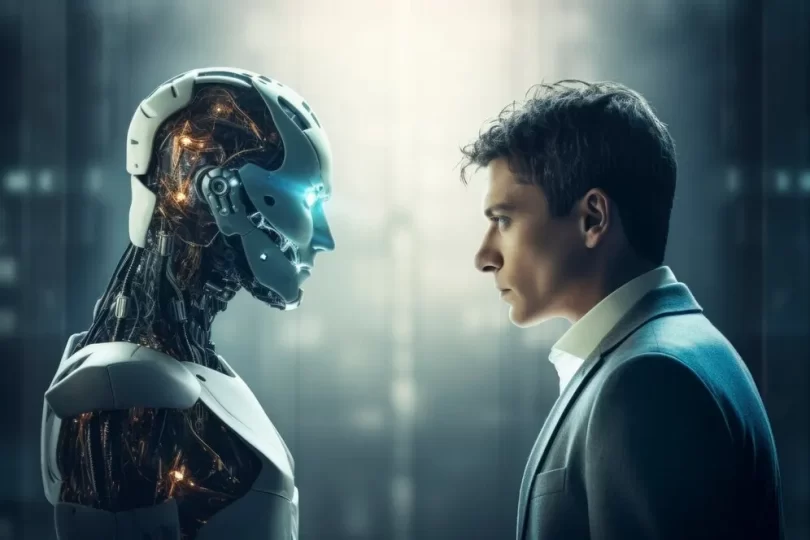In the ever-evolving world of sports, artificial intelligence has moved from being a novelty to a serious player. It crunches numbers, predicts patterns, analyzes performances, and now, it’s creeping into one of the most human parts of the game—coaching.
Which brings us to a bold question: can AI ever truly replace a human coach? At first glance, it sounds futuristic. But as algorithms become smarter and data gets deeper, AI is starting to fill roles that were once reserved for experienced eyes, firm voices, and gut instincts.
Contents
Coaching by Code: How AI Is Entering the Dugout
In modern cricket and other sports, AI is already involved in strategic decisions. From bowling changes to field placements, there’s an algorithm quietly feeding suggestions behind the scenes. Wearables track biometric data. Cameras record every move. AI analyzes it all—and spits out feedback faster than a coach could shout from the sidelines.
And it doesn’t stop there. AI coaching tools offer batting form analysis, fatigue detection, personalized fitness plans, and even opponent breakdowns, sometimes before a coach has even had a chance to review the footage.
This level of input is also changing the way fans interact with the game. For those who like to study data—or wager based on it—platforms like online cricket betting are incorporating AI-powered stats to offer a sharper view of who’s likely to perform and why.
So yes, the machines are learning. And fast.
Why Coaches Still Matter—A Lot
Despite the rise of data and AI, human coaches aren’t fading away. In fact, many are working hand-in-hand with analytics teams to enhance their game plans, not replace them.
Because while AI can dissect a batting stance down to the millimeter or alert when a bowler’s load is peaking, it can’t feel the moment. It doesn’t know how pressure is affecting a player. It can’t read body language during a team talk or sense when someone just needs to be left alone for a bit.
The truth is, coaching isn’t just technical. It’s emotional, situational, and intuitive. That mix of mentorship and motivation can’t be reduced to a data set—not yet, anyway.
So What’s the Right Balance?
The sweet spot might be collaboration. The best coaches of today are using AI like an assistant coach—there to provide insights, track patterns, and spot red flags early. But when it comes to actually leading the team, choosing the right words, or calling a bluff in a pressure moment, it’s still the humans calling the shots.
This AI-human hybrid approach is already visible in some of the top franchises and national teams. Coaches sit beside data analysts, discuss projections, and then lean on experience to make the final call.
If you’re into seeing how teams prepare off the field—fitness drills, match prep, even AI usage—MelBet Instagram India shares it all, with reels that show the grind behind the games.
Where AI Wins, and Where It Doesn’t
Let’s break it down quickly:
Where AI Shines:
- Breaking down mechanics and movement
- Tracking form over time with consistency
- Offering personalized fitness and recovery plans
- Spotting opponent weaknesses through data modeling
- Preventing injuries through real-time biometric analysis
Where Humans Still Rule:
- Managing personalities and egos
- Making gut decisions in dynamic moments
- Motivating, mentoring, and building trust
- Reading the mental and emotional state of players
- Adapting quickly when plans go sideways
AI is brilliant with patterns, and coaches are brilliant with people. Together, they create a sharper, more resilient team environment.
Will the Coach of the Future Be a Robot?
Not likely. But they might carry a tablet, wear a smart headset, and make decisions based on a blend of experience and real-time data fed by an algorithm.
We’re more likely to see “AI-literate” coaches rather than AI replacing coaches. Much like pilots fly with autopilot—but never without a pilot in the seat—sports will always need that human at the helm.
That said, we may see more automated training drills, emotion tracking through AI wearables, and live strategy updates during games. It’s not science fiction anymore—it’s already here in bits and pieces.
Final Thoughts
AI might never give an inspiring locker-room speech or sense a breakthrough brewing in a batter’s eyes. But it can offer insights that sharpen strategy, protect players, and push performance further.
The future of coaching isn’t man vs. machine—it’s man with machine. The best results will come from partnerships, where data meets instinct and code complements character.
And at the end of the day, no matter how many screens light up in the dugout, it’s still about people leading people—because sports will always be human at heart.







